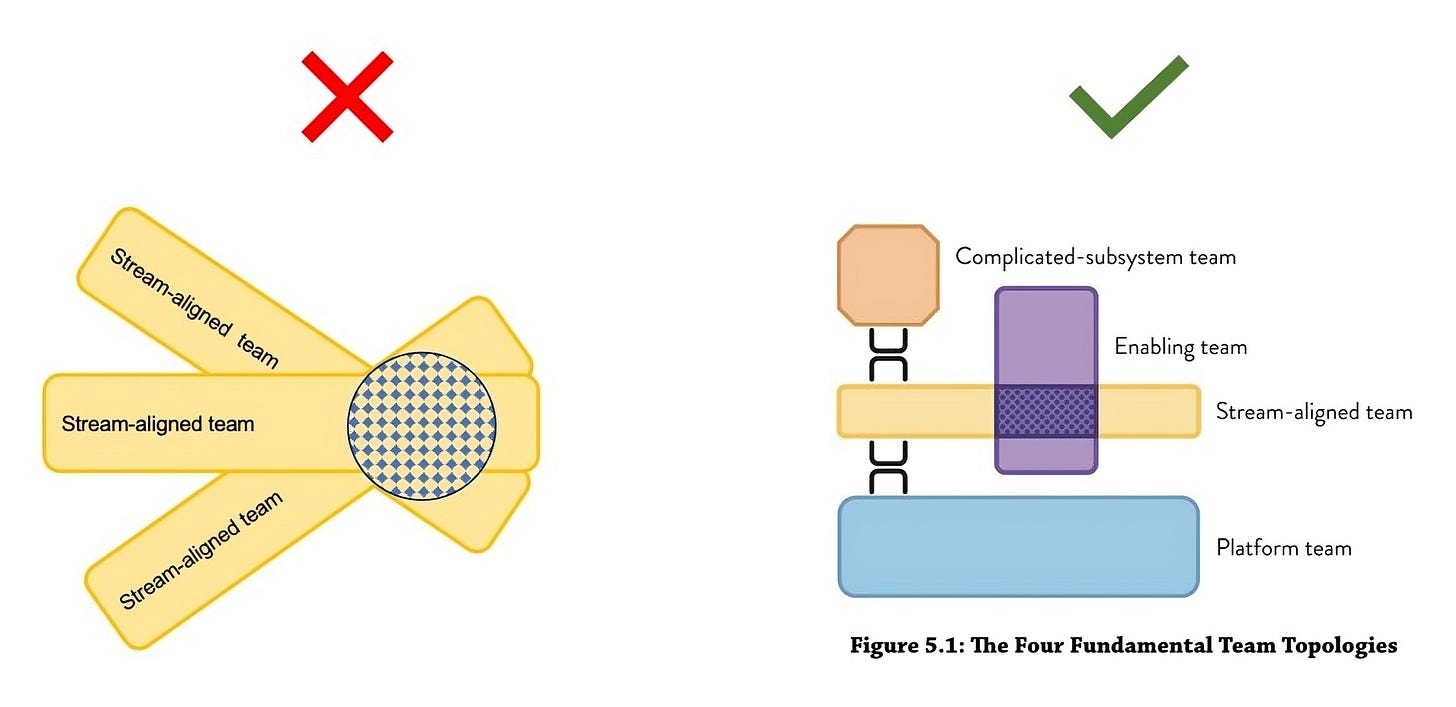What this newsletter is about
Scrum is praised as effective, but it's really not. "Effective Delivery" teaches how to improve IT team performance using Team Topologies. Is this for you?
This is “Effective Delivery” — a bi-weekly newsletter from The Software House about improving software delivery through smarter IT team organization.
It was created by our senior technologists who’ve seen how strategic team management raises delivery performance by 20-40%.
Hey! Thanks for dropping by.
My name’s Adam, and I’m a CTO guiding the work of 220 architects, developers, and QA/DevOps engineers.
After 14+ years in IT, I have noticed two truths I’d like to dedicate this newsletter to:
Technology managers carry an expectation that their engineers can adopt new technologies smoothly, since they seem to be open to constant learning, but that’s not how life works,
If IT keeps missing deadlines or has releases plagued by production bugs, the solution is not to increase oversight but to reorganize team structure and individual responsibilities.
Now, I wish every other IT leader also believed in these truths.
Having worked in commercial projects with 5 or 300 developers, I know that most don’t.
That’s why all of your and my life decisions brought us exactly here.
What is the goal of this newsletter
To help Technology Managers understand that stream-aligned IT teams are ineffective outside the maintenance phase.
“Effective Delivery” will teach IT leaders how to introduce Team Topologies, a flexible framework for optimizing team delivery that we’ve tried and tested successfully for over three years.
You can watch a 1-minute intro from its authors here.
Who is this for
CTOs, Heads of Engineering, Heads of Development, and other IT team organizers, with at least 20 developers on the inside.
You might wanna give this newsletter a chance if this happens in your department:
IT doesn’t have documented practices for effective delivery or they aren’t used,
Teams use Scrum but they still face delivery delays,
Roles and responsibilities seem set but they get blurry in an active project,
Teams duplicate work or block each other,
DevOps constantly tweak infrastructure instead of… enabling development,
You don’t use an “enabling team” to introduce new technologies,
IT doesn’t have a box of reusable components to avoid repeating builds
Teams are structured by technologies or domains and not product streams
How this is different
While my friends and I admire the concept of Team Topologies, we don’t sell it as the ultimate solution.
“Effective Delivery” will advocate how to use it correctly according to its rules.
You can see it like this:
Your IT team is like your league of top-class soccer players.
This newsletter explains the most optimal team formation leaders can use for a given match.
So, who’s doing this?
We’ll have a rotation of authors who are senior leaders at The Software House.
You’ll hear only from our experts who used the rules of Team Topologies in commercial projects instead of asking ChatGPT what to write 😉
Besides me, Adam, you could hear from Andrzej, our Head of Development, and Marek, our COO.
Why should I trust your advice
Our company is literally paid to send in an engineering team that works with the core team to unblock delivery, often on the tightest deadline.
We are judged by how effectively we handle software.
And we’re judged not only by our CEO (God bless you), but also by CTOs, CPOs, and owners of organizations across 9 industries.
While working as Enabling or Platform teams in commercial projects, our engineers:
Increased deployment frequency by 9.5x,
Sped up a platform's time-to-market by 75%,
Reduced app setup time by 92%.
What can you expect
Stick around as we explore:
When Team Topologies can help
What are the 4 team types IT leaders can deploy
Which team to use and when
How to measure if the freamework works
Review Effective Delivery #1
It’s already out!
Learn why using stream-aligned Scrum teams exclusively is bad for business, and what’s a healthy alternative.







